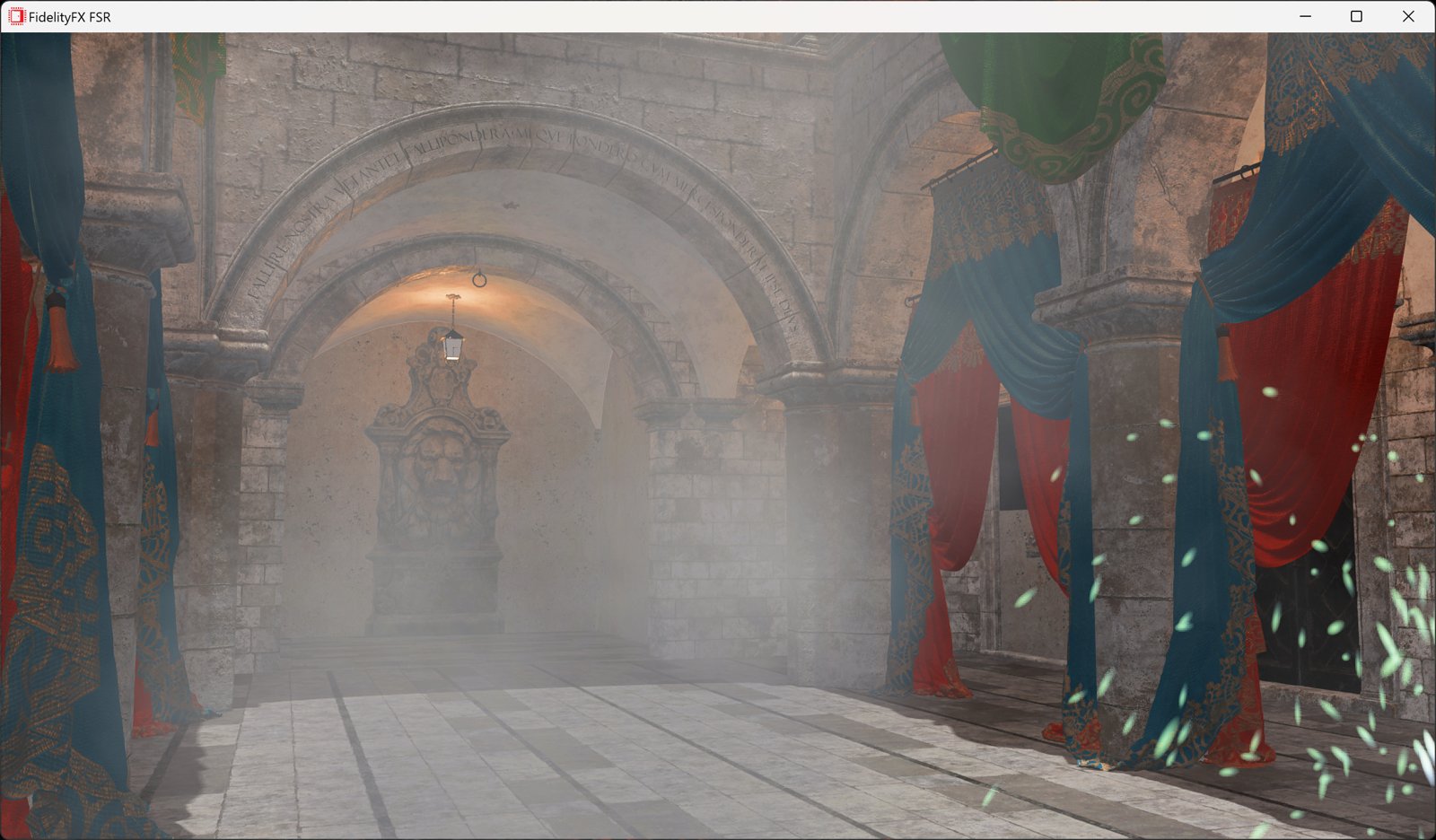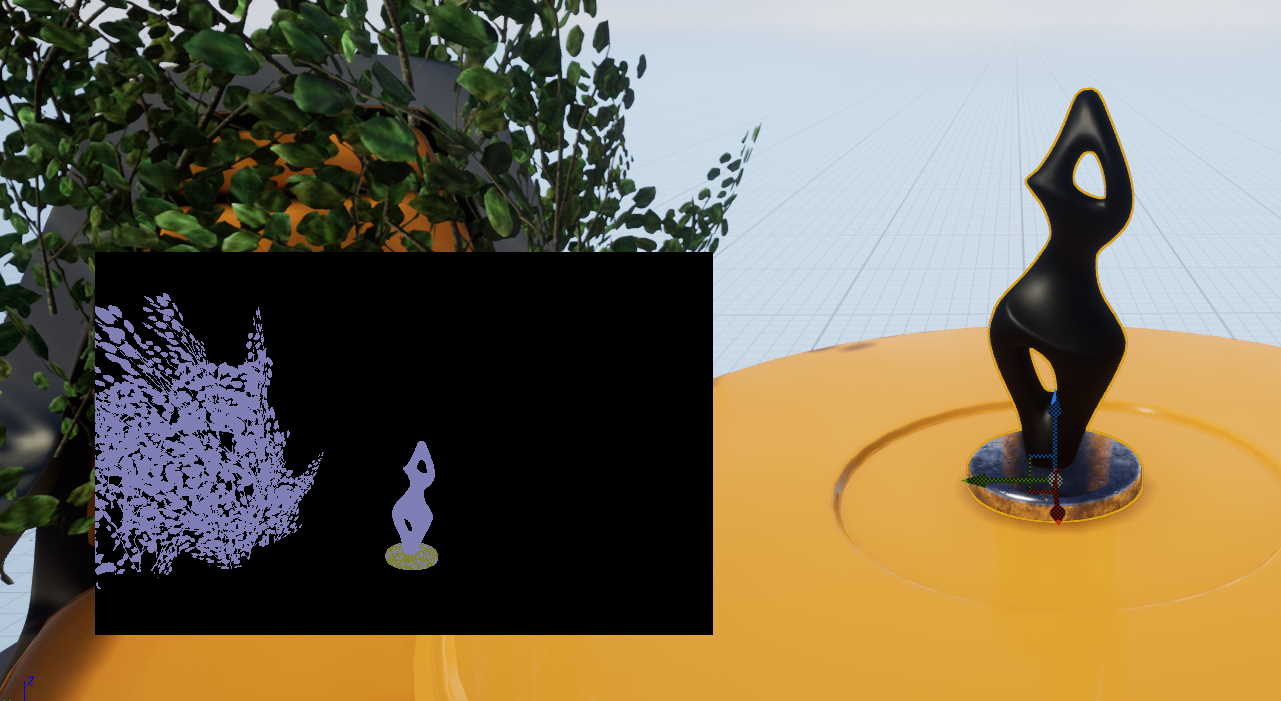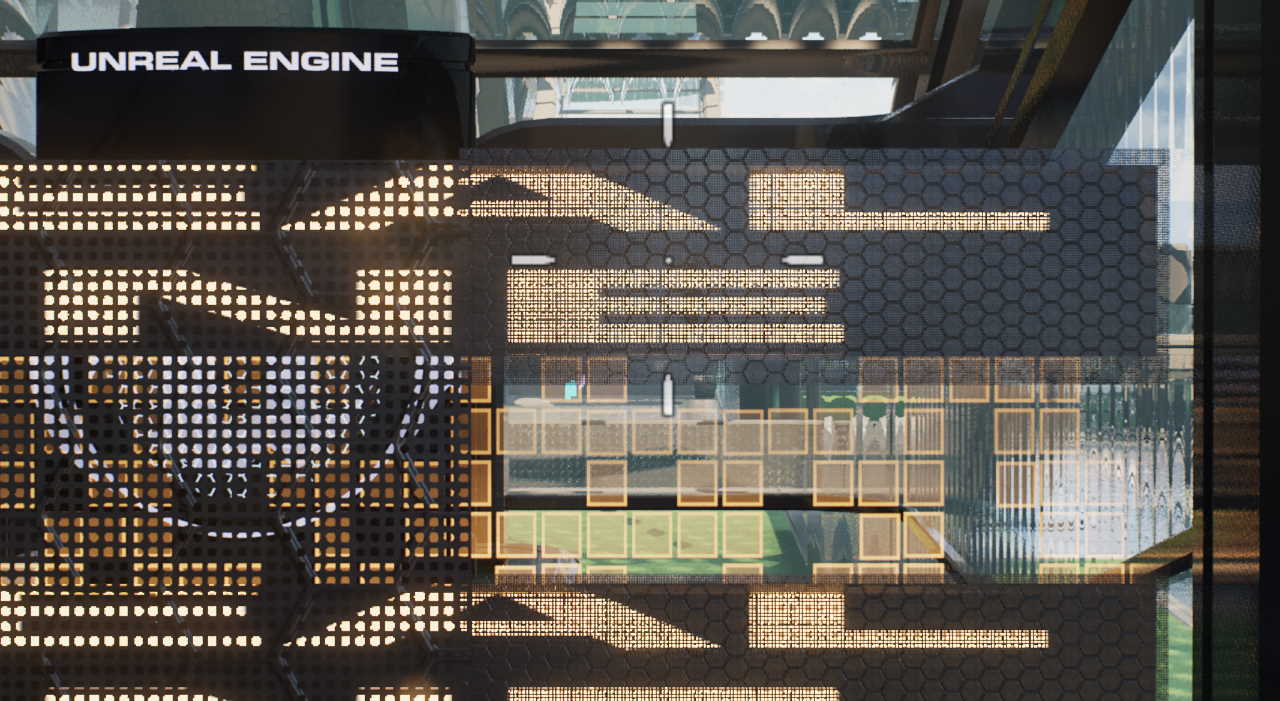We were very excited to return to GDC in 2022, and share our latest developments with you!
Here you’ll find links to the YouTube videos of our sponsored sessions, as well as links to the slide decks.
FidelityFX Super Resolution 2.0
Thomas Arcila, Software Development Engineer, AMD
Colin Riley, GPU Developer Technology Engineer, AMD
 Download slides (2MB/PDF)
Download slides (2MB/PDF)
FidelityFX Super Resolution 2.0 is AMD’s next generation upscaling technology, delivering similar or better than native image quality using temporal data.
In this talk, Colin and Thomas will first discuss how this new technology is able to significantly increase image quality, diving into some of the algorithmic aspects which enable FSR 2.0 to reconstruct upscaled fine details from low-resolution input images. Then, multiple optimizations implemented during development will be presented, including how FSR 2.0 manages cross-platform performance.
Lastly, game developers will learn valuable insight on how to integrate FSR 2.0 to allow for the highest visual quality upscaling at optimal performance.
A guided tour of Blackreef: rendering technologies in Deathloop
Lou Kramer, GPU Developer Technology Engineer, AMD
Gilles Marion, Lead Graphics Programmer, Arkane Lyon
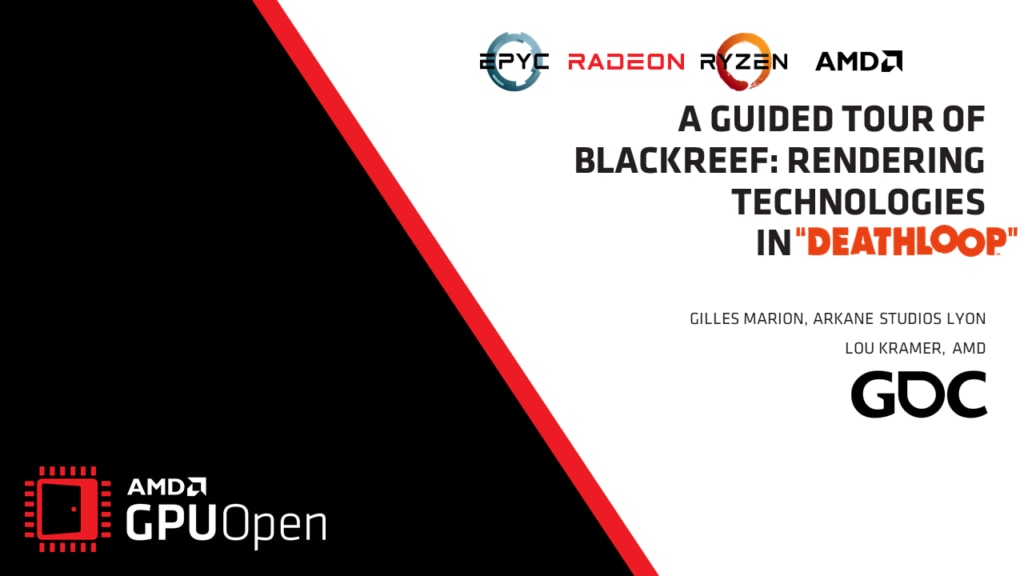 Download slides (8MB/PDF)
Download slides (8MB/PDF)
In this talk you will learn how Arkane Lyon was able to depict the deadly beauty of Blackreef thanks to their proprietary Void engine, freshly ported to DirectX 12 and full of amazing features.
Particular attention will be paid to the challenges of adding ray-tracing to the engine in an efficient manner, and how Deathloop’s multiple technology advancements compare to their previous title.
Details will be provided on how Arkane and AMD worked closely together to integrate technologies and optimizations to make the game run smoothly on all platforms.
Performant Reflective Beauty - Hybrid Raytracing with Far Cry 6
Stephanie Brenham, 3D Team Lead Programmer, Ubisoft Montreal
Ihor Szlachtycz, GPU Developer Technology Engineer, AMD
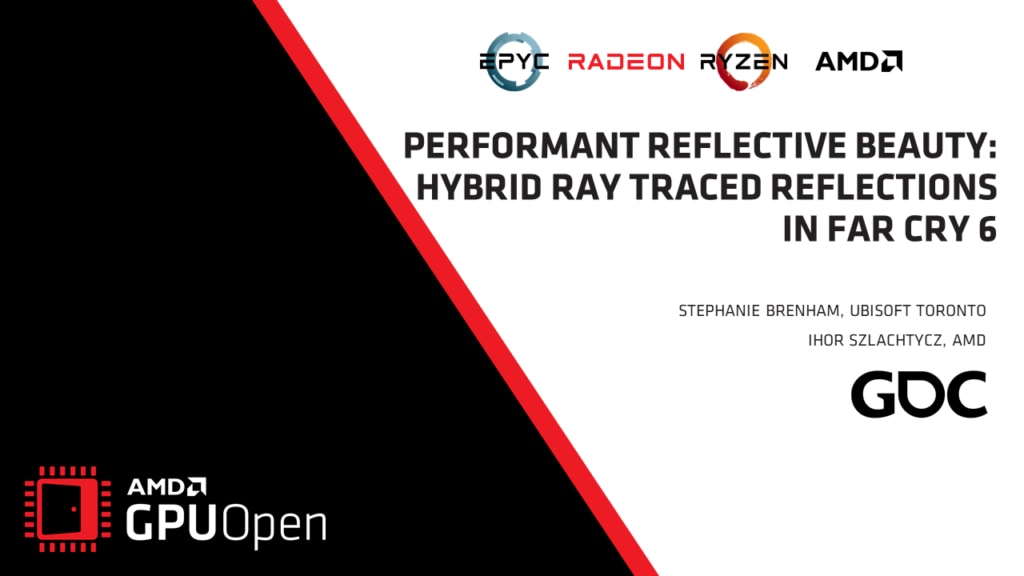 Download slides (6MB/PDF)
Download slides (6MB/PDF)
This session will cover the collaboration between AMD and Ubisoft on Far Cry 6 implementing hybrid ray traced reflections.
This talk will cover what Hybrid Reflections are, how Far Cry 6 implemented them, and how AMD and Ubisoft worked together to optimize it for a wide range of GPUs.
Stephanie will go over the technique and many of the implementation challenges that were solved along the way while Ihor will cover recommendations to get maximum performance.
The session will conclude with information on the AMD GPUOpen Hybrid Reflections sample which implements the technique and can be used by developers to try the technique out today.
Raytracing Performance Revealed - How to optimize your game with the RDTS
Chris Hesik, Principal Member of Technical Staff, AMD
Can Alper, Software Development Engineer, AMD
 Download slides (10MB/PDF)
Download slides (10MB/PDF)
Improving performance for your ray tracing game is challenging, most notably, in the construction of effective acceleration structures and visibility into the ray tracing pipeline. Existing techniques do not apply; new ways of thinking and new tools are required.
If you find yourself asking the following questions, this talk is for you:
- How does the use of ray tracing impact my frame?
- What is the performance of my ray tracing pipelines?
- What is the relative cost of my ray generation, traversal, any hit, closest hit, and miss shaders?
- How can I optimize acceleration structures to reduce intersection cost?
- Did I apply the correct flags and transform onto my geometry?
In this presentation, we will demonstrate how you can use the Radeon™ GPU Profiler and a new tool, the Radeon™ Raytracing Analyzer, to illuminate the common performance-related issues when developing games.
Breaking down the world of Athia: the technologies of Forspoken
Aurelien Serandour, Senior GPU Developer Technology Engineer, AMD
Teppei Ono, Technical Director, Luminous Productions
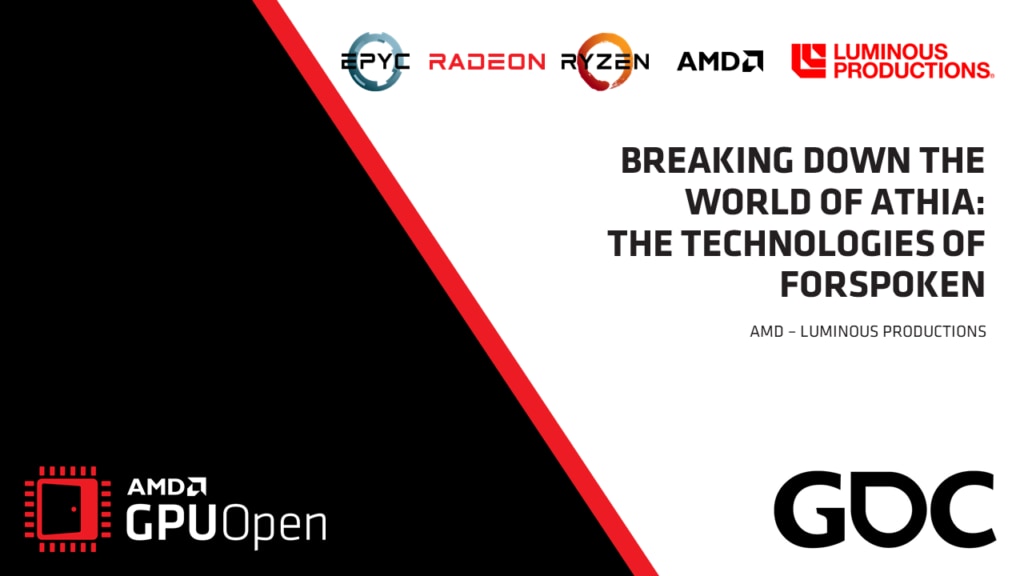 Download slides (11MB/PDF)
Download slides (11MB/PDF)
This session will cover the collaboration between AMD and Luminous Production on their upcoming title: Forspoken. This partnership resulted in the implementation of various AMD technologies into the game, including screen-space ambient occlusion, screen-space reflections, ray traced shadows and AMD FidelityFX Super Resolution.
Along with a short presentation of those techniques, this talk will detail the process to integrate them into the Luminous Engine and how AMD and Luminous Productions worked hand in hand to optimize it across a wide range of AMD GPUs.
Forspoken is also supporting the new Microsoft DirectStorage API. A part of the session will be dedicated to its addition to the game highlighting the challenges the studio faced and the benefits it is bringing to the title.
AMD Ryzen™
Processor Software Optimization
Ken Mitchell, Principal Member of Technical Staff, AMD
 Download slides (2MB/PDF)
Download slides (2MB/PDF)
Join AMD for an introduction to the AMD Ryzen™ family of processors which power today’s game consoles and PCs.
Learn about Ryzen™ products. Dive into instruction sets, cache hierarchies, resource sharing, and simultaneous multi-threading. Discover profiling tools and techniques. Gain insight into code optimization opportunities and lessons learned with examples including C/C++, assembly, and hardware performance-monitoring counters.



















